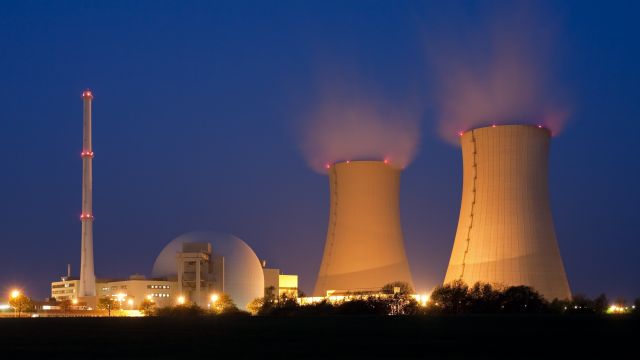
Brokdorf, Grohnde, Gundremmingen C – a brief review
In recent years, the three reactor units have together produced about 32 TWh of electricity annually – that is about 5.6 % of the total electricity produced in Germany each year. Over their entire operation lifetimes, the three plants fed a total of about 1,150 TWh into the grid. The operators claim that this has saved almost 30 million tonnes of CO2 annually, which would otherwise be produced if the same amount of electricity were generated by non-renewable energies. The Grohnde nuclear power plant (NPP) holds the world record for the largest amount of electricity generated by such a plant: It is so far the only NPP in the world that has generated more than 400 TWh. This amount of electricity could supply all of Germany with electricity for about 9 months.
Reportable events
Over the years, there have been around 700 reportable events in the three reactor units that will cease power operation at the end of 2021. However, most of these were "events of no or minor safety significance", which are below the seven-level International Nuclear and Radiological Event Scale (INES). There was only one anomaly that was classified as Level 1, which is the lowest level on the INES scale.
On behalf of the German Federal Government, GRS evaluates reportable events in German and foreign NPPs and contributes to the safety of nuclear facilities at home and abroad with the lessons learned from these events. But it is not only their consideration from a technical point of view – aspects such as human error sources, man-machine interactions and the organisational structure are also taken into account.
If GRS comes to the conclusion that lessons for safer power plant operation may be derived from a reportable event, it communicates them to the Federal Ministry for the Environment in the form of a so-called Information Notice. From the entirety of all the reportable events in the three plants, GRS derived a total of 69 Information Notices and about 250 recommendations for improving safety.
Radioactive discharges and waste
During operation, NPPs are allowed to discharge certain quantities of radioactive substances in liquid, aerosol or gaseous form into the environment, e.g. tritium or the radioactive noble gas xenon. The maximum amount of activity that may be discharged per year is such that a person would receive an annual total dose of 0.3 millisieverts (mSv) per exposure pathway (air and water). The conversion of the permissible radiation exposure into nuclide quantities is carried out very conservatively: It is assumed that a person spends the whole year at the plant fence and lives on water and food from the immediate vicinity of the plant.
In the three NPP units to be shut down on 31 December 2021, the limits for discharges were also mostly undercut significantly. The average annual radiation exposure from discharges from these NPPs was 0.01 mSv per person. This is the approximately 400th part of the around 4 mSv per year to which an individual in Germany is exposed on average – for example through medical applications or through natural radiation.
In addition to ionising radiation, NPP operation also produces radioactive waste; a distinction is made between low-, medium- and high-level radioactive waste.
Low- and medium-level radioactive waste includes, for example, contaminated tools, protective clothing or filters. However, the bulk of the volume of this waste is made up of the disused plant components that will be accrued during dismantling in the coming decades. For the time being, this waste will be stored near the NPP sites in storage facilities operated by BGZ (Bundesgesellschaft für Zwischenlagerung, the federally owned company for storage) until it is finally disposed of in the "Schacht Konrad" repository – the total volume of waste will amount to about 10,000 m³ per NPP.
High-level radioactive waste includes in particular spent fuel assemblies and waste from reprocessing. In the reactor units at Brokdorf, Grohnde and Gundremmingen C, a total of just under 10,000 fuel assemblies were used, which corresponds to slightly less than 3,000 t of heavy metal or over 300 loaded Castor casks. It has to be remembered that some of the fuel elements were sent to France and Great Britain for reprocessing; from this reprocessing, vitrified high-level radioactive waste in the form of glass logs was also returned to Germany in Castor casks.
This waste, too, must first be stored in the storage facilities of BGZ until a repository for heat-generating radioactive waste is built and ready for use in Germany. The search for a disposal site has only just begun, and the first waste will not be emplaced until the second half of this century, which means that radioactive waste will probably still have to be stored temporarily at the sites even after the NPPs have been dismantled (approx. 10 to 20 years).